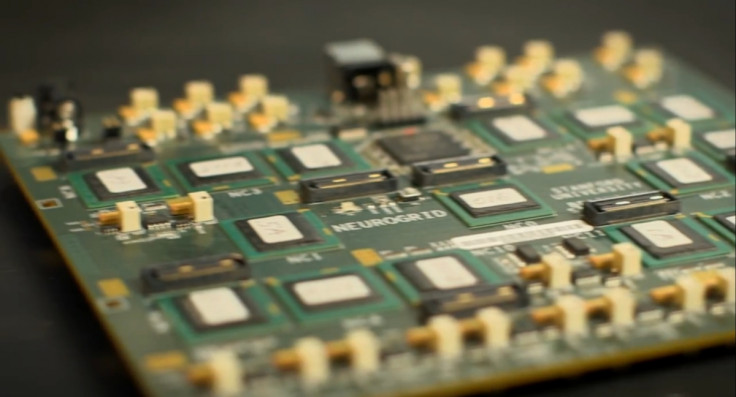Bioengineers Create Circuit Board Modelled on Human Brain
The technology gives new insights into how a brain functions

Bioengineers at Stanford University have developed an energy-efficient microchip based on the human brain that operates 9,000 faster than a standard PC.
The technology gives new insights into how a brain functions and could have significant implications for the advancement of robotics and the future of prosthetic limbs.

Kwabena Boahen, an associate professor of bioengineering at Stanford, led a team in developing a circuitboard known as Neurogrid.
Neurogrid is capable of simulating a million brain neurons and billions of synaptic connections in real time 100,000 times more energy efficiently than a personal computer simulation of the same number of neurons.
The article, published by the Institute of Electrical and Electronic Engineers (IEEE), explains how Neurogrid - a device about the size of an iPad - can simulate orders of magnitude more neurons and synapses than other brain mimics on the power it takes to run a tablet computer.
Brain implants
Currently, the million-neuron Neurogrid circuit boards cost around $40,000 (£24,000) but Boahen believes significant cost reductions are possible.
By increasing the production scale and using more modern manufacturing processes, the cost of the circuit board could be reduced to as little as $400.
If such cost reductions are possible then there would be numerous applications for the technology.
It's low-power aspect combined with its incredible speed means it could be used not only in consumer-based wearable electronics, but also to drive prosthetic limbs with the speed and complexity of our own actions.
Electrical engineers at Stanford are now developing ways of reading brain signals to understand movement in order to be able to implant the chip into a physically disabled person's brain.
"It becomes potentially clinically viable for quadriplegics or people who have lost control of a limb," said Sam Fok, a graduate student at Stanford who worked on the microchip.
"It can bypass wherever that damage is by taking signals directly from the cortex and then control some kind of robotic limb."
© Copyright IBTimes 2024. All rights reserved.







